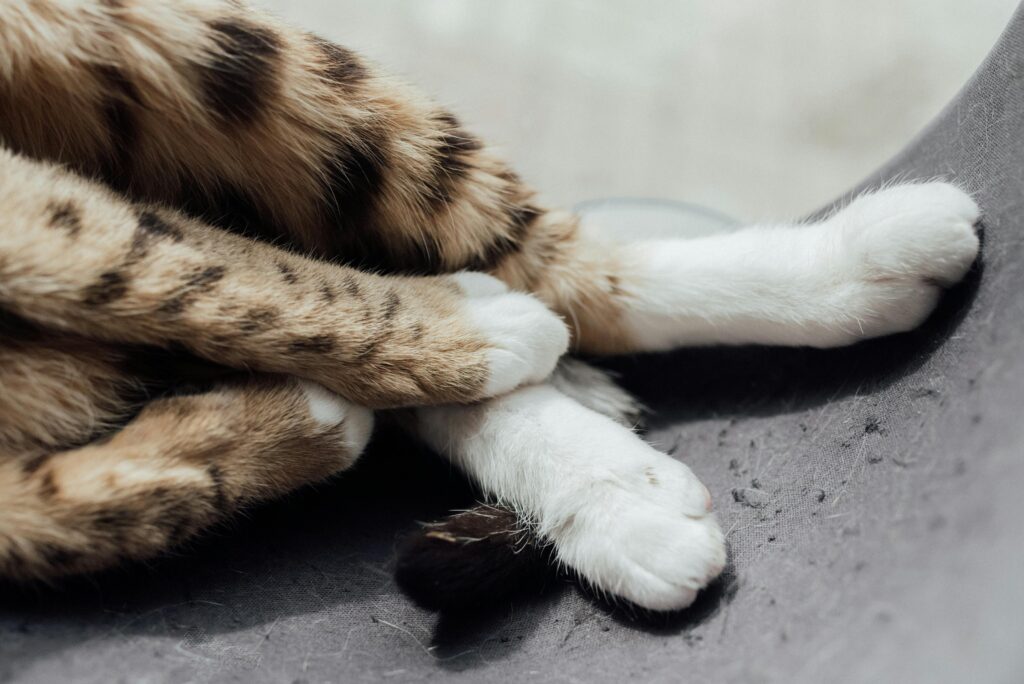5 reasons why cats shouldn’t be declawed
Stress
It can be so stressful when you own a cat and love it so much and at the same time you are trying to keep your home looking nice. Your fur baby keeps scratching your furniture to the point of destruction. You have tried so many things to redirect it, but it keeps scratching that expensive couch! You get to that point that you feel like you have no choice but to declaw your cat. Yes! This will solve all your problems. Your furniture will stay looking nice and you won’t feel like you have to get rid of your loving companion.
What does it mean to declaw a cat? Declawing, or onychectomy, according to the American Veterinary Medical Association, is the amputation of the last digital bone, including the nail bed and claw, on each front toe. If the surgery is performed correctly and the entire nail bed is removed, the claw cannot regrow. The surgery involves the risk of anesthesia, excessive bleeding and postoperative complications, including infection, and is accompanied by pain that may last from several days to much longer unless appropriate pain control is provided.
Although the idea of not having to worry about scratching and the potential destruction of furniture that the claws of a cat may cause, we need to take into consideration the cons of declawing a cat.
litterbox Issues
Along with the surgical complications mentioned, they may also develop issues using the litter box. According to an article from The Feline Hospital, this littler aversion may start immediately, if not, years after getting declawed. This is because they associate pain with the litterbox due to having to step into a litterbox using their now-painful paws. The Feline Hospital article says, “Most behavior-related litterbox problems occur in declawed cats.”
PAIN
The unnecessary pain you may force your cat to go through is another factor. Petmed explains that cats do not express their pain in an obvious way that a pet parent would normally notice. “Examples of pain that you should watch for after declawing include decrease movement, lameness or limping, or a “guarding” posture.” Petmed writes. They also add that surgical procedures that involve bones may be more painful than others and that chronic, long-term pain is rare, but it can occur.
Aggression
Aggression is another con that a cat may develop from getting declawed. They are “more likely to bite other cats and humans and act nervous and high-strung.” the American Association for the Prevention of Cruelty to Animals say. A cat’s claws are what they use for defense if they feel like they are in danger. Therefore, they may be quicker to use their teeth or to be aggressive if they feel like they need to attack to protect themselves.
Lameness
Now imagine your toes getting cut off and now you must get up and walk. That would be difficult to do. It is no different for cats! According to PETA, “Because of impaired balance after the procedure, declawed cats have to relearn how to walk, much as a person would after losing his or her toes.” Many would think that a cat’s claws would be as useful as our human nails are to ours and that they would be completely fine without them. But the truth is that claws are a lot more useful to them than we think. A cat’s claw is good for their balance, grooming, speed. The Humane society explains that scratching is normal cat behavior. “It helps your cat stretch their muscles, shed the outer nail sheath from their claws and mark territory.’ they explain. Veterinarian Susan Krebsbach from the Humane Society Veterinary Medical Association says, “It’s a sign of a happy cat.” Behaviorist Matt Wildman also from The Human Society adds that cats do not understand the concept from right and wrong. All they know is to meet their needs and so they follow that instinct.
So, what would be the best alternative to declawing? Well, luckily for us, there are several. One of them would be to keep your cat’s nails trimmed, “Keeping their claws in good shape by sharpening their claws on scratching posts may even serve as stress relief for your cat” says Daniel McPartland from comfortedkitty.com. Another good alternative would be to add scratching posts to your home, cat deterrents like double sided tape or sprays also help. These are easy to come by at any local store. And there are also temporary soft pads to use on your cat’s nails to prevent them from scratching.
Say No To Declawing
As easy as it may seem to just declaw your cat to prevent them for scratching instead of doing all the work of having to constantly look for different ways to redirect them, lets first think if it is worth putting your loving fur baby through the risk of putting their life in danger, the pain, the stress, and all the other lifelong issues it may cause them and the inconvenience it may cause you. Like having to reteach your cat to walk and use the litter box.
DONATE TOWARDS THE KRAKEN POST
catshttps://www.avma.org/sites/default/files/resources/declawing_bgnd.pdf
https://thefelinehospital.com/declawing-fact-sheet-scratching-claws-biting/
https://www.aspca.org/about-us/aspca-policy-and-position-statements/position-statement-declawing-cats
https://www.comfortedkitty.com/trimming-cat-claws/#:~:text=Claws%20improve%20both%20speed%20and,stress%20relief%20for%20your%20cat
https://www.humanesociety.org/resources/why-declawing-bad-your-cat
https://www.peta.org/living/animal-companions/8-reasons-never-declaw-cats/-
https://www.petmed.com/cat/general-health/negative-side-effects-of-declawing-

